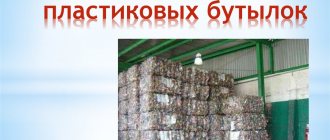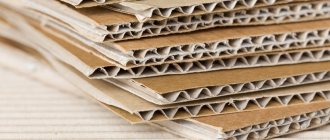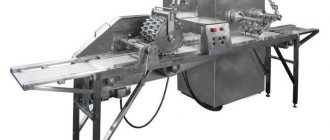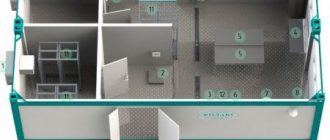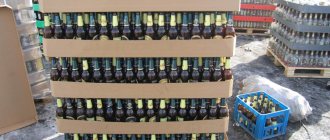According to generally accepted stereotypes, made from waste paper exclusively low-quality products. The most prominent representatives are packaging and toilet paper. Of course, in the post-Soviet space this is a priority area for the use of secondary raw materials, while Western countries have long been making full use of the waste paper resource in the production of various goods of appropriate quality. Our country is gradually adopting this positive experience. As a result, more and more production technologies are appearing:
- building materials;
- insulating materials;
- fabrics (clothing);
- accessories for the automotive industry;
- disposable tableware;
And of course, waste paper remains the main raw material for
- cardboard;
- corrugated cardboard;
- egg packaging;
- kraft bags;
- technical paper;
- office paper;
- printing products.
- personal hygiene products;
The growing popularity of waste paper as a semi-finished product in the production of cellulose is due, first of all, to its relatively low cost. At the same time, paper sent to a landfill along with other household waste becomes unsuitable for further reproduction and turns into garbage.
And in order to obtain the cellulose necessary for the production of paper products, more than one tree has to be destroyed. Therefore, waste paper is gradually becoming quite a valuable commodity, the search for effective methods of processing it continues, and the number of companies involved in this industry is increasing.
Business relevance
The average resident throws out more than 3 centners of garbage per year, 40% of which is paper waste. Back in school we were taught: a hundredweight of waste paper saves one tree. 1 ton of such paper waste replaces 4 cubic meters of wood.
Recycling paper and cardboard today is a profitable business, which elevates the company to the level of socially responsible, and makes it possible to receive not only the respect of fellow citizens, but also encouragement from the authorities.
Modern technologies make it possible to recycle 75% of used paper. In Russia today, approximately 12% of all waste paper is recycled.
Manufacturing technology
Modern waste paper recycling technology consists of the following stages:
- sorting;
- the paper is immersed in specialized containers and filled with water, where it is soaked for some time;
- the resulting raw material is pressed and crushed using a vibrating sieve and rubbing;
- removal of unnecessary objects (paper clips, staples), substances (dust, dirt, dyes, glue residue, fats, etc.);
- the remaining liquid is removed, the resulting mass is called pulp;
- moving the pulp into the papermaking machine (mesh drums take all the liquid, and the raw material settles on the mesh, it is leveled according to the specified thickness);
- the material is transferred to the sintering drum, where it dries and becomes the finished material.
Video - How does it work? Paper recycling:
How cardboard is made
Although the production technology is not very different from making napkins, it still needs to be considered in more detail. The finished raw materials are also poured into tanks and soaked, after which they are brought to a homogeneous mass with stirrers. The resulting mixture then enters the pulper, where the purification process takes place. Next, the raw material enters the turbo separator, where all accumulated debris is removed from it.
The finished and purified mixture is fed to a specialized mill, where it is ground into small particles. They fall into a sieve, where unnecessary, too small and too large pieces of cellulose are sifted out. The filtered mixture enters a container and is mixed with starch and rosin glue, after which it is ground again and diluted to the required concentration. Aluminum sulfate is added to it and sheets of the required shape are formed. Then, using a press, the raw materials are compressed and cut to specified sizes. If necessary, the material is dried and sent to the warehouse.
Let's look at approximate figures for production costs. To make 1000 kilograms of packaging cardboard you need 1050–1100 kilograms of waste paper. The production process will require the consumption of 17 cubic meters of water and 600–650 kW of electricity. The cost per square meter of finished products is approximately 20–25 rubles, the cost price is 10 rubles. If you make corrugated cardboard, then a meter of it costs 30–35 rubles, the cost price is 12 rubles.
As you can see, there is nothing particularly difficult about recycling paper. Even a novice entrepreneur can start production, provided he has start-up capital or investments; the business will fully pay for itself in 2 years, after which it will generate a stable profit.
Reception of waste paper
Many enterprises buy waste paper at specialized points, but you can organize paper collection yourself. Reception of waste paper is carried out using different methods:
- installation of specialized containers;
- acquisition from enterprises;
- collection from different companies.
Each of these methods requires certain costs.
After all, even if you pick up paper from an enterprise for free, you need money for freight transportation. The situation is the same with containers - their installation will also require costs. Until recently, many institutions and enterprises gave away paper for free, but with the growth of processing companies, almost every company began to sell raw materials.
Which companies are considered the most paper-heavy? As a rule, these are supermarkets, stores selling food and household appliances. But get ready for the fact that most of them are already cooperating with processing plants.
To ensure that organizing this business plan does not cause difficulties, enter into agreements for the purchase of waste paper and install containers for collecting paper in advance.
Financial plan
Approximate start-up costs for setting up a business will be:
- purchase and installation of equipment – 2,800,000 rubles;
- registration of permits – 25,000 rubles;
- preparation of the premises - 100,000 rubles.
Monthly expenses consist of:
- rent - 50,000 rubles;
- purchases of base (30 tons) – 120,000 rubles;
- utility and tax payments – 30,000 rubles;
- packaging and delivery – 60,000 rubles;
- wages for employees (5 people) – 100,000 rubles.
As evidenced by logistics conclusions, at the last stage of processing only 30-40% of the initial raw materials from which paper is made remains (due to production losses of about 20% and the formation of non-recyclable waste - up to 50%).
From 30 tons of waste paper, 12 tons of paper are produced. If you establish permanent sales channels, you can get about 912 thousand rubles per month.
The net profit in this case will be 552 thousand rubles (912,000-50,000-120,000-30,000-60,000-100,000).
The payback period will be 6 months. In reality, establishing stable sales channels at high prices is not so easy, and unplanned costs always arise. In practice, the production of A4 office paper pays for itself in a year.
Cardboard production
Cardboard is used as a packaging material: boxes, pizza packaging and other things necessary for business are made from it. It brings good profits, but serious investments will be needed in its production. In fact, making cardboard is practically no different from making toilet paper, except that a different line is used. But the equipment for it is more expensive.
Production fully pays for itself in 2 years
The total cost of opening a small workshop will be about 7–8 million rubles. You will also need a workshop that meets the production conditions: the presence of water supply and sewerage, a good ventilation system, heating, and a three-phase power line. The minimum area for a workshop is 100 m2, another 100–200 meters will be needed for a warehouse, the recommended total area for production is 400 m2 (provided that this is a small production and not a full-fledged plant). The raw materials used are mixed cardboard, corrugated cardboard and cellulose. As of 2020, the cost of a ton of such raw materials is 5 thousand rubles for cardboard and 20 thousand rubles for cellulose. It is also possible to add ordinary waste paper, but it should not be more than 15 percent of the total mass. To give cardboard the necessary qualities, starch, aluminum sulfate and rosin glue are added to the raw material.
Let's make a small calculation of the profitability of production based on a small workshop. The total level of investment in production will be 8 million rubles. Net profit per month, minus taxes, salaries and funds for the purchase of raw materials, is about 500 thousand rubles. Accordingly, the line will fully pay for itself in 16 months, after which it will begin to generate stable profits. Of course, you are unlikely to immediately reach maximum production capacity, but in general, with the right approach, all costs made can still be recouped in two years.
Business registration
To recycle waste paper and produce paper, you must register with government agencies. When choosing a legal form, it is recommended to choose a limited liability company. The fact is that large suppliers and retail chains work more actively with legal entities than with private entrepreneurs. If you want to establish stable sales channels, register as an LLC with OKVED code 21.1 “Production of cellulose, wood pulp, paper and cardboard.”
The permit package must contain:
- company charter;
- production license;
- certificate of conformity;
- certificate for raw materials;
- lease agreement for production space;
- registration certificate;
- extract from the Unified State Register of Legal Entities.
Technological process of recycling waste paper
The collected paper is first sorted according to GOST 10700-97. The main criterion for the supplied raw materials is density. There are 12 types of waste in total. They are divided into 3 groups:
Sorting and processing of waste paper
- Group “A” is considered the highest quality and most expensive - office paper, white uncoated and unbleached sulphate paper, pulp paper waste, white bags and thick bags made of uncoated paper;
- group “B” of medium density consists of corrugated cardboard, old books without bindings;
- Category “B” includes low-grade waste paper of the lowest density and quality: colored cardboard, newspapers, impregnated bags, molded cardboard and paper waste.
Paper that has not undergone pre-treatment also belongs to the third group. Waste paper from the latter two is suitable for the manufacture of packaging containers and egg trays. The waste paper pulp of the first group is used to create notebooks, albums, and toilet paper.
The paper recycling process consists of several stages and depends on the type of waste paper and the subsequent use of pulp:
Reception and sorting workshop for waste paper
- classification of waste paper;
- cleaning from foreign objects;
- defibration;
- additional dissolution.
The first stage of the sorting process is carried out according to category. All waste paper is cleaned of impurities from fabric, metal, and tape. It is carried out only manually.
The previous stages are also most often carried out manually. But engineers are constantly working to create machines with artificial intelligence that can recognize the characteristics of raw materials when processing waste paper.
Equipment and inventory
To process waste paper, you need to buy the following set of paper production equipment:
- paper making machine, which consists of:
- generator;
- pulper;
- vibrating screens;
- mills;
- mixer;
- cleaner;
- washing mechanism;
- machine for cutting sheets;
- packaging machine;
- pasting table;
- packing table
Video - Automatic line for the production of A4 office paper:
There are many automatic lines for recycling waste paper on the domestic market. It is recommended to choose suppliers who will not only provide installation and commissioning, but also carry out repairs if necessary. Video - Papermaking equipment:
Risks, disadvantages
As in any other business, waste paper processing and paper production has its disadvantages and pitfalls:
- it is difficult to find a suitable room that meets fire safety standards and sanitary requirements;
- as the project develops, it is necessary to buy more expensive equipment, loaders and presses;
- With each new processing cycle, the quality of the paper decreases (by about 20%), since the connection between the particles of the material decreases, so raw materials that have already been processed several times will be unprofitable.
Possibility of combining with another type of business
When launching a processing workshop, if the starting investment is not enough to launch full-scale production, you can not engage in paper production, but buy a machine for processing waste paper and sell the pulp. It is used as the main raw material base by pulp and paper mills and factories that produce various paper products. Video - Equipment for the production of ecowool (cellulose insulation) from waste paper:
Also, in addition to paper, you can produce other products, for example, a small line for the production of toilet paper and napkins costs from 1,000,000 rubles, and a complex for the production of cardboard containers costs 3,000,000 rubles.
Full cycle mini-plant
A full-cycle cardboard or paper processing plant will pay for itself much faster than a primary or partial processing plant, but it will also require more investment. Full-cycle enterprises operate continuously, which requires a regular supply of raw materials, qualified personnel, energy resources, convenient logistics and established sales channels.
At such mini-factories, you can start producing kraft paper, paper towels, napkins, and toilet paper. The direction of manufactured products should be decided immediately; this will allow the organization to purchase the necessary equipment, which has significant differences, at the initial stage.
The starting price of a mini-factory for the production of paper napkins and toilet paper starts from 1 million rubles. The entrepreneur will need to be prepared for a long payback period for the project. It's all about the great competition in this niche and the low cost of the final product.
Equipment for the production of cardboard or kraft paper will cost the industrialist even more. The starting price of such a line is 3 million rubles. But the payback of such a plant is much higher due to well-organized management and the cost of the finished product.
We recommend: Using the battery container: collection and storage
In addition, cardboard and kraft paper do not require additional coloring or bleaching. Cardboard is in demand by many enterprises that purchase it as packaging material in large quantities.

